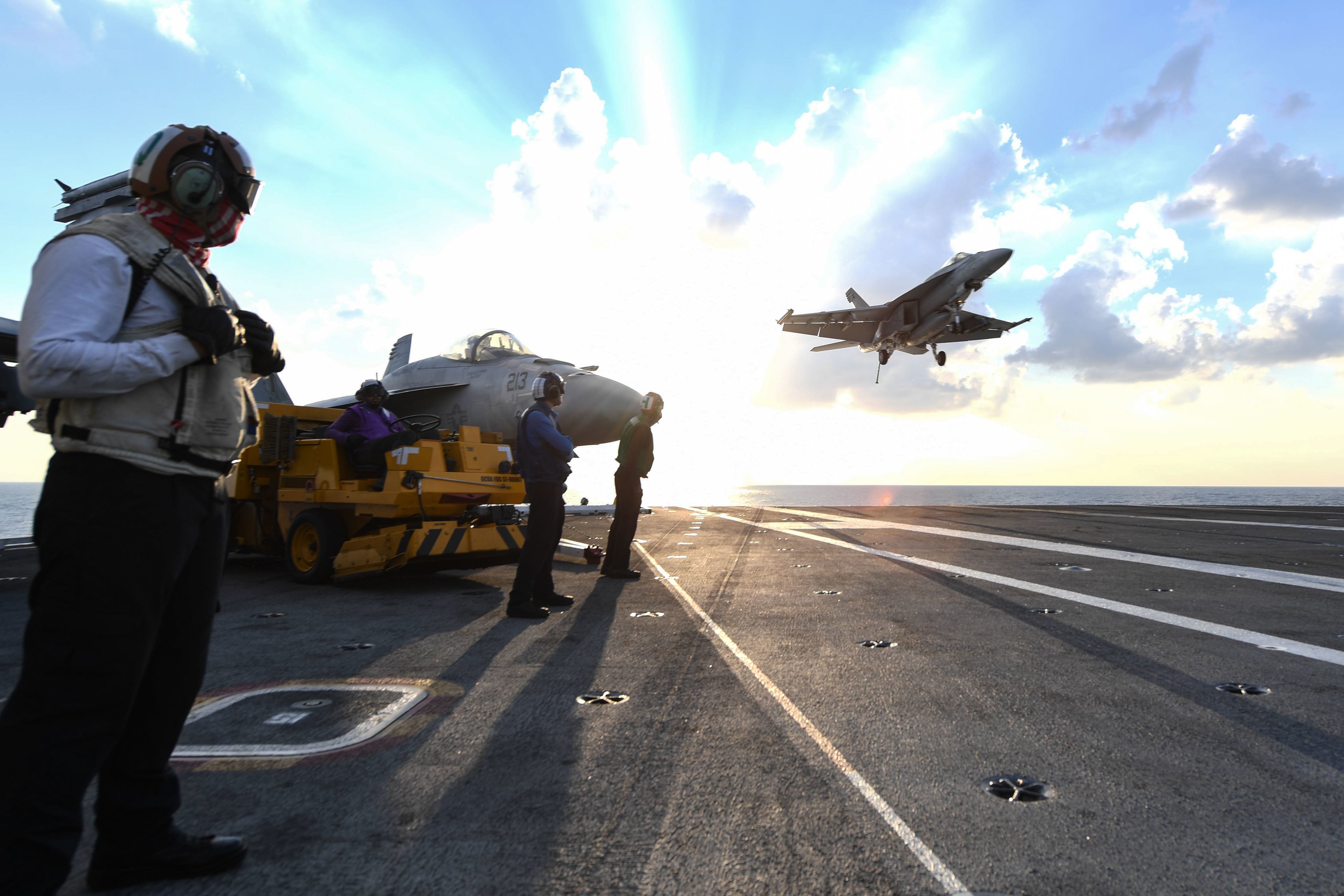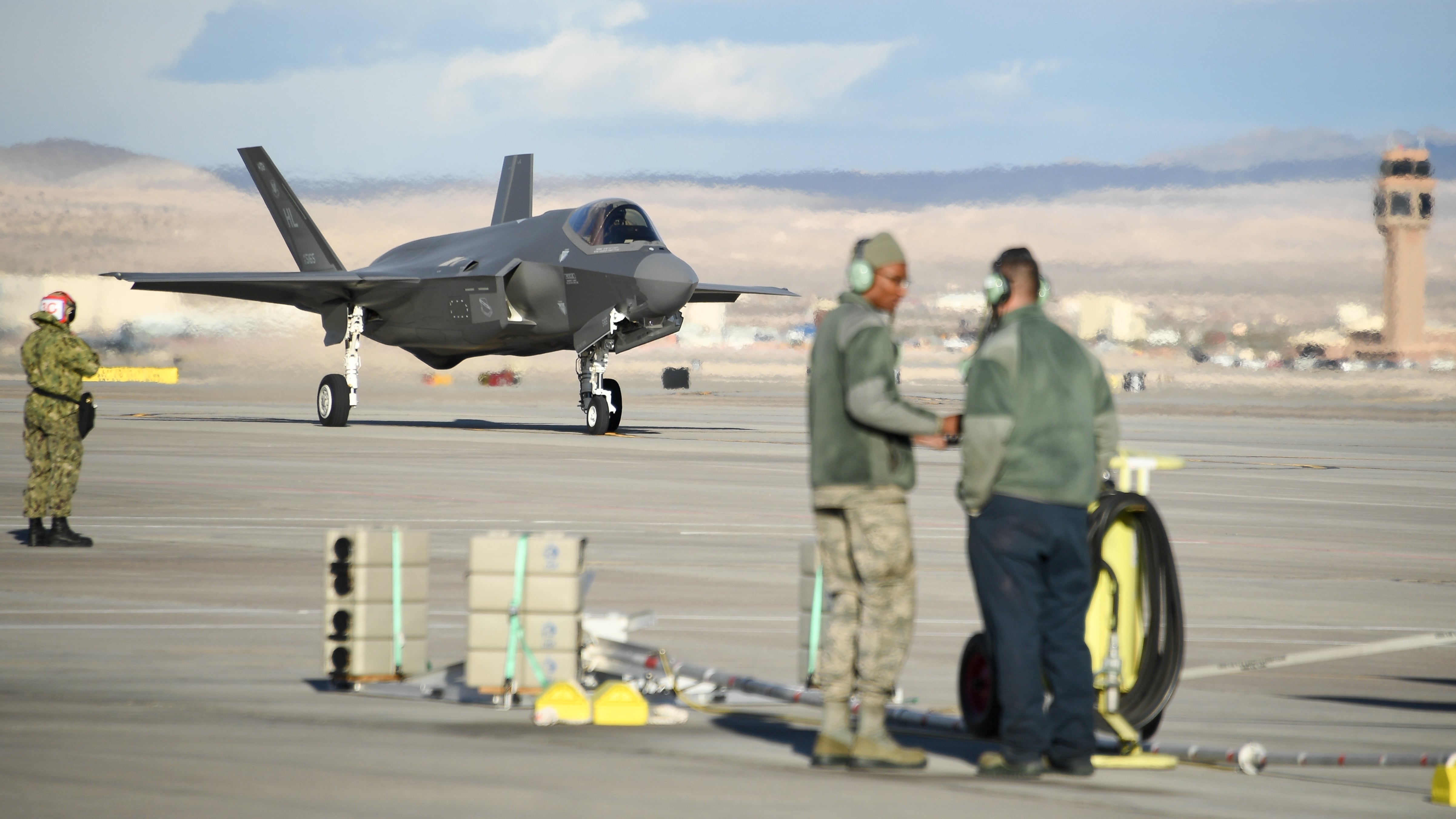WASHINGTON — The Pentagon’s cost assessment office doesn’t believe the F-35 program office can achieve a “stretch goal” of getting the "A" model’s cost per flying hour to $25,000 by fiscal 2025, its director said Thursday.
“The department doesn’t see a path to get to $25,000 dollars per flying hour by FY25,” said Robert Daigle, the outgoing head of the Cost Assessment and Program Evaluation office, during a House Armed Services subcommittee hearing. “There are a fair number of studies going on right now that are going to provide some more information on that, but that’s a target and it’s not our projection for where we’re actually going to be.”
RELATED

Both CAPE and the F-35 Joint Program Office arrived at similar projections for the F-35A conventional takeoff and landing variant’s cost per flying hour in FY24, with CAPE estimating $36,000 per hour and the JPO pegging costs at $34,000 per hour, said Daigle, who is stepping down later this month. (The two organizations did not provide an estimate for FY25, which is outside of the regular five-year budget cycle.)
Either figure would be an improvement from the FY18 rate, in which one hour of flight time in the "A" model cost about $44,000. However, the oldest F-35s will begin to move into long-term depot maintenance in the mid 2020s, causing a moderate rise in price during the later portion of the decade.
“After 2024, projections are that the cost per flight hour are going to flatten out and then increase a little bit because the planes are starting to age where you’re going to have to start bringing them back to the depot,” Daigle said.
The JPO has identified steps that it can take to boost reliability, decrease the spare parts shortage and increase the ease of maintaining the F-35, Vice Adm. Mat Winter, the F-35 program executive, told reporters after the hearing. Those factors make him confident the office can meet the FY24 projection of $34,000.
RELATED

However, reaching $25,000 by FY25 is more of a “stretch goal,” he said. “That will be very, very hard to meet. But it’s FY19 right now, and we have a number of years.”
With the government and Lockheed Martin confident that the unit costs of the F-35A will fall to $80 million by FY20, the Pentagon has turned its eye to lowering the costs of operating and maintaining the F-35. The latest Defense Department acquisition figures — obtained last month by Bloomberg News — peg O&M costs at $1.196 trillion.
During Thursday’s hearing, Air Force and Defense Department officials used ongoing concerns about F-35 sustainability as a critical argument in favor of purchasing Boeing’s F-15EX fighter jet.
Rep. Donald Norcross, the New Jersey Democrat who chairs HASC’s Tactical Air and Land Subcommittee, asked what, if anything, Congress could do so the Air Force can buy more F-35s instead of the F-15EX.
Air Combat Command head Gen. Mike Holmes acknowledged that the price of the F-35 aircraft is falling, but expressed concern that the service would be able to buy and sustain the systems associated with the jet, like simulators and its logistics platform.
“Right now the air vehicle is out ahead of those other elements,” he said. “Producing more elements would be one part of it, but keeping up in all of those other areas — to me — would be the challenge.”
Winter added that while the material needed to manufacture each plane is decreasing, the supply chain is struggling to get parts to Lockheed’s production line on time — which increases labor costs because the aircraft can’t move as quickly through the production process.
“I’m hitting a stagnant plateau with Lockheed Martin because they are 600 parts behind on average: 600 parts not on the production line when I need them,” he said.
The shortage of spare parts also extends to the services’ operational jets, which are competing for the same supply of components as a new production aircraft.
“That supplier that generates a widget is generating a new widget for the production line, for our spare package, and we still have to repair the ones that are breaking in the field,” Winter said. In addition, the reliability of parts is still not meeting expectations, and it’s taking too long to move them through depot, he added.
In a statement, a Lockheed spokesman said the company continues to see a path to reach the $25,000 goal by FY25.
“We’ve reduced the Lockheed Martin-portion of F-35 CPFH [cost per flying hour] by about 15 percent since 2015. Lockheed Martin represents less than half of total O&S [operations and sustainment] costs, and we are partnering with our customers to further reduce costs across the enterprise to meet these joint goals,” he said.
Valerie Insinna is Defense News' air warfare reporter. She previously worked the Navy/congressional beats for Defense Daily, which followed almost three years as a staff writer for National Defense Magazine. Prior to that, she worked as an editorial assistant for the Tokyo Shimbun’s Washington bureau.




